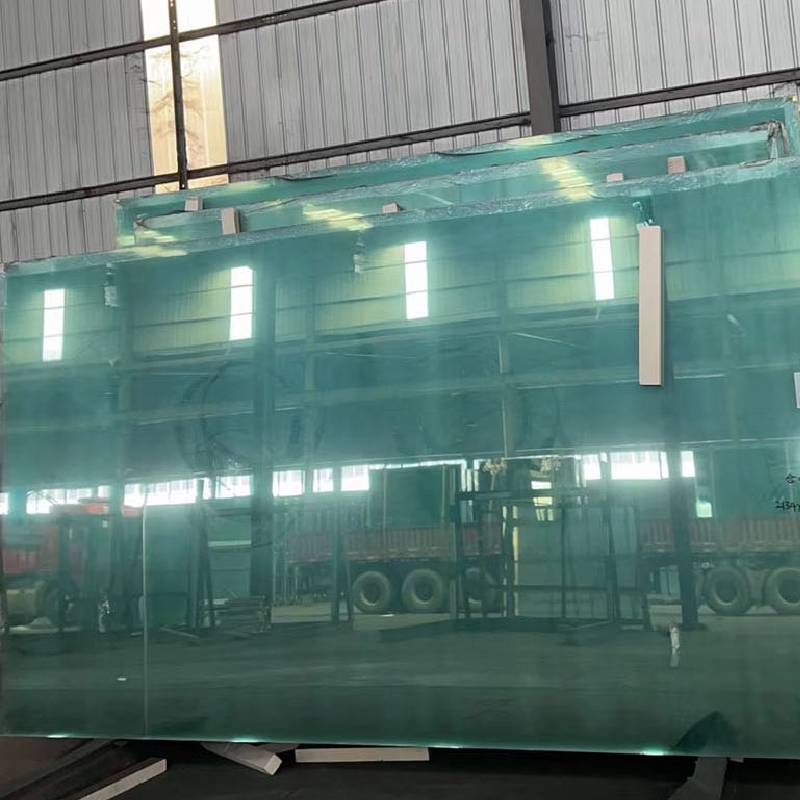The Evolution and Impact of Architectural Glass Manufacturers
Architectural glass has become a pivotal element in modern construction, transcending its traditional role and evolving into a vital component of contemporary architectural design. The shift towards using glass in buildings has catalyzed the growth of architectural glass manufacturers, transforming not only the aesthetics of structures but also their functionality and energy efficiency.
The Historical Context
Architectural glass has been a part of the construction landscape for centuries, but its significance surged in the 20th century with the advent of modernism. Architects began to embrace glass as a central design element, offering transparency and the ability to connect indoor and outdoor spaces. The iconic works of architects like Le Corbusier and Mies van der Rohe showcased glass as a means to enhance spatial perceptions and create innovative, light-filled environments.
As technology advanced, architectural glass manufacturers developed various types of glass products tailored for specific needs, paving the way for its extensive use in skyscrapers, curtain walls, and facades. From simple window panes to complex structural glazing, glass has transformed how buildings interact with their environment, architects, and occupants.
The Role of Manufacturers in Advancing Glass Technology
Architectural glass manufacturers have played a significant role in advancing the technology associated with glass production. Innovations such as energy-efficient glazing, insulated glass units (IGUs), and smart glass technologies have emerged from continuous research and development efforts. Energy-efficient glass technologies, for instance, contribute to reducing the energy consumption of buildings by minimizing heat loss and reducing the need for artificial lighting.
Moreover, advancements in coatings and treatments have enhanced the performance of glass products. Low-emissivity (low-E) coatings help reflect infrared light, keeping buildings cooler in summer and warmer in winter, which has significant implications for energy conservation. Additionally, self-cleaning glass products have become popular, offering practical solutions for maintaining the appearance of high-rise buildings while minimizing the labor and costs associated with cleaning.
architectural glass manufacturers
The Impact on Architectural Design
The growing availability of advanced glass products has expanded design possibilities for architects. Glass allows for greater creativity, enabling architects to create dynamic and visually stunning structures. Large glass panels and intricate glazing systems can shape the aesthetic of buildings, resulting in iconic landmarks such as the Louvre Pyramid in Paris, the Tate Modern in London, and the Apple Park in Cupertino, California.
Furthermore, architectural glass plays a crucial role in enhancing natural light within spaces, improving the quality of life for occupants. Studies have shown that access to natural light can positively affect mood, productivity, and overall well-being, making glass not just a design element, but also a contributor to human health.
Sustainability and The Future of Architectural Glass
As the world increasingly prioritizes sustainability, architectural glass manufacturers are adapting to meet these demands. There's a growing emphasis on the production of recycled glass and the integration of sustainable practices throughout the manufacturing process. Manufacturers are also focusing on producing glass that meets green building standards, contributing to projects that earn LEED (Leadership in Energy and Environmental Design) certification.
Looking ahead, the future of architectural glass manufacturing appears bright, with further innovations on the horizon. Emerging technologies, such as photovoltaic glass that can generate electricity, and dynamic glass that can adjust its tint based on sunlight exposure, hold the potential to redefine energy systems in buildings.
Conclusion
Architectural glass manufacturers are at the forefront of a revolution in the construction industry, making significant contributions to aesthetic design, sustainability, and technological advancement. As the demand for energy-efficient and environmentally friendly solutions continues to rise, these manufacturers will play a critical role in shaping the buildings of the future. The continued partnership between architects, builders, and glass manufacturers will ensure that architectural glass remains an essential element in the creation of spaces that are not only visually striking but also functional and sustainable. In this evolving field, the intersection of art, technology, and environmental responsibility will inspire future innovations that redefine how we experience and interact with our built environments.
 Afrikaans
Afrikaans  Albanian
Albanian  Amharic
Amharic  Arabic
Arabic  Armenian
Armenian  Azerbaijani
Azerbaijani  Basque
Basque  Belarusian
Belarusian  Bengali
Bengali  Bosnian
Bosnian  Bulgarian
Bulgarian  Catalan
Catalan  Cebuano
Cebuano  Corsican
Corsican  Croatian
Croatian  Czech
Czech  Danish
Danish  Dutch
Dutch  English
English  Esperanto
Esperanto  Estonian
Estonian  Finnish
Finnish  French
French  Frisian
Frisian  Galician
Galician  Georgian
Georgian  German
German  Greek
Greek  Gujarati
Gujarati  Haitian Creole
Haitian Creole  hausa
hausa  hawaiian
hawaiian  Hebrew
Hebrew  Hindi
Hindi  Miao
Miao  Hungarian
Hungarian  Icelandic
Icelandic  igbo
igbo  Indonesian
Indonesian  irish
irish  Italian
Italian  Japanese
Japanese  Javanese
Javanese  Kannada
Kannada  kazakh
kazakh  Khmer
Khmer  Rwandese
Rwandese  Korean
Korean  Kurdish
Kurdish  Kyrgyz
Kyrgyz  Lao
Lao  Latin
Latin  Latvian
Latvian  Lithuanian
Lithuanian  Luxembourgish
Luxembourgish  Macedonian
Macedonian  Malgashi
Malgashi  Malay
Malay  Malayalam
Malayalam  Maltese
Maltese  Maori
Maori  Marathi
Marathi  Mongolian
Mongolian  Myanmar
Myanmar  Nepali
Nepali  Norwegian
Norwegian  Norwegian
Norwegian  Occitan
Occitan  Pashto
Pashto  Persian
Persian  Polish
Polish  Portuguese
Portuguese  Punjabi
Punjabi  Romanian
Romanian  Russian
Russian  Samoan
Samoan  Scottish Gaelic
Scottish Gaelic  Serbian
Serbian  Sesotho
Sesotho  Shona
Shona  Sindhi
Sindhi  Sinhala
Sinhala  Slovak
Slovak  Slovenian
Slovenian  Somali
Somali  Spanish
Spanish  Sundanese
Sundanese  Swahili
Swahili  Swedish
Swedish  Tagalog
Tagalog  Tajik
Tajik  Tamil
Tamil  Tatar
Tatar  Telugu
Telugu  Thai
Thai  Turkish
Turkish  Turkmen
Turkmen  Ukrainian
Ukrainian  Urdu
Urdu  Uighur
Uighur  Uzbek
Uzbek  Vietnamese
Vietnamese  Welsh
Welsh  Bantu
Bantu  Yiddish
Yiddish  Yoruba
Yoruba  Zulu
Zulu 

